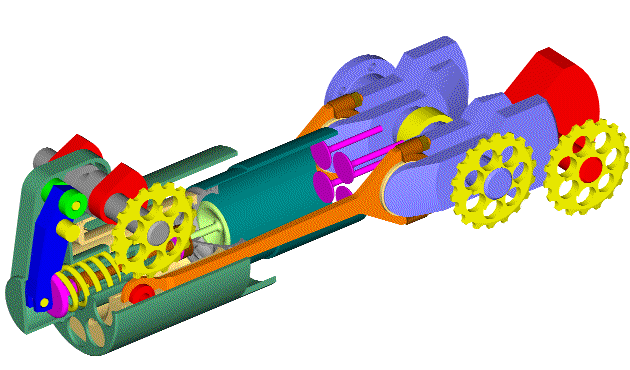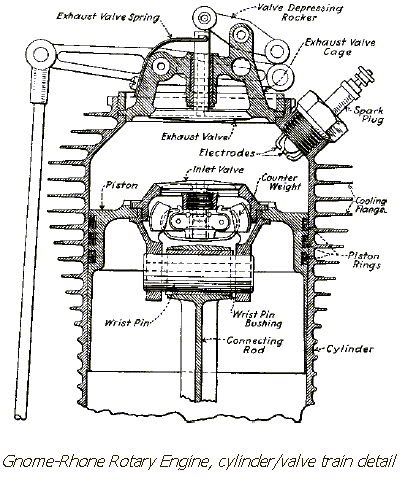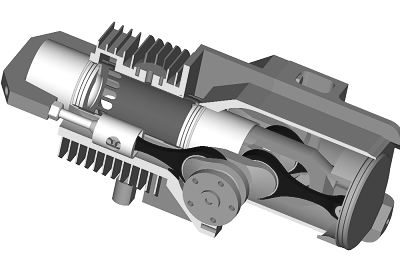
the balance webs on the crankshaft (cyan), the (red) contra-rotating counterweight besides the crankshaft (at right), and the (red) contra-rotating small counterweights secured on the intake camshaft (at left) balance completely the first order inertia force without increasing the inertia torque.
The vibration-free quality of this single cylinder PatPortLess is better than the vibration-free quality of the four-stroke two-cylinder TwinAir engine of FIAT used in several successful small and medium size cars: the two engines have the same number of combustions per crankshaft rotation, but the PatPortLess has a better balancing (the single counter-rotating balancing shaft of the FIAT TwinAir engine cancels the first order inertia force in expense of a substantially increased inertia torque; this is why in engines like the Yamaha TDM it is used a pair of counter-rotating balancing shafts).
If the two-cylinder four-stroke TwinAir of FIAT is good, according the journalists / testers, for the new Alfa Romeo Mito, the single cylinder PatPortLess is better.
Any thoughts?
Longer piston dwell:
Unlike the conventional engines wherein the connecting rods are push-rods, the connecting rods of the PatPortLess are pull-rods: they are heavily loaded only in tension; the loads try to straighten / to unbend them (thinner and lightweight con-rods).
The PatPortLess arrangement shifts the combustion to the slow dead center.
In a conventional engine having a "connecting rod to stroke" ratio equal to 2, the crank angle during which the piston remains at the top 10% of its stroke is 66.2 degrees.
In a PatPortLess having a "connecting rod to stroke" ratio equal to 2, too, the crank angle during which the piston remains at the top 10% of its stroke is 83.9 degrees.
At the same revs (rpm), the piston of the PatPortLess remains in the top 10% of its stroke for 27% more time than the piston of the conventional (83.9/66.2=1.27).
Equivalently, when the PatPortLess operates at 27% higher revs than the conventional, the pistons of both remain in the top 10% of their strokes for the same time. For instance, when the abovementioned PatPortLess operates at 6000 rpm and the abovementioned conventional operates at only 4.750 rpm (=6000/1.27), the pistons of both remain in the top 10% of their strokes for (83.9/360)*(60/6000)=0.00233 seconds.
For lower "connecting rod to stroke" ratios, things get worse for the conventional.
For shorter intervals near the CTDC (say 5% of the piston stroke instead of the 10% used in the previous comparison), things get worse for the conventional.
In a reciprocating engine having 15:1 compression ratio:
when the piston has covered 5% of its stroke moving away from the Combustion TDC, the "remaining" expansion ratio has drop to 8.8:1; any quantity of fuel burned at that moment would undergo an expansion ratio of 8.8.
when the piston has covered 10% of its stroke moving away from the Combustion TDC, the "remaining" expansion ratio has drop to 6.25:1; any quantity of fuel burned at that moment would undergo an expansion ratio of only 6.25.
For more: http://www.pattakon....PatPortLess.htm
Thanks
Manolis Pattakos






















